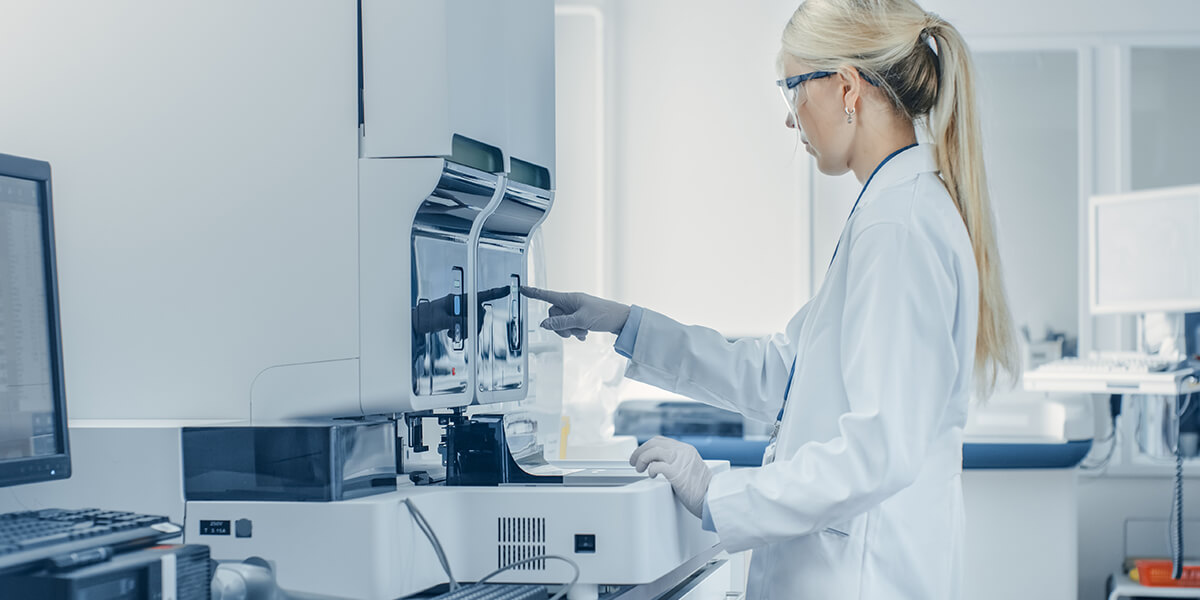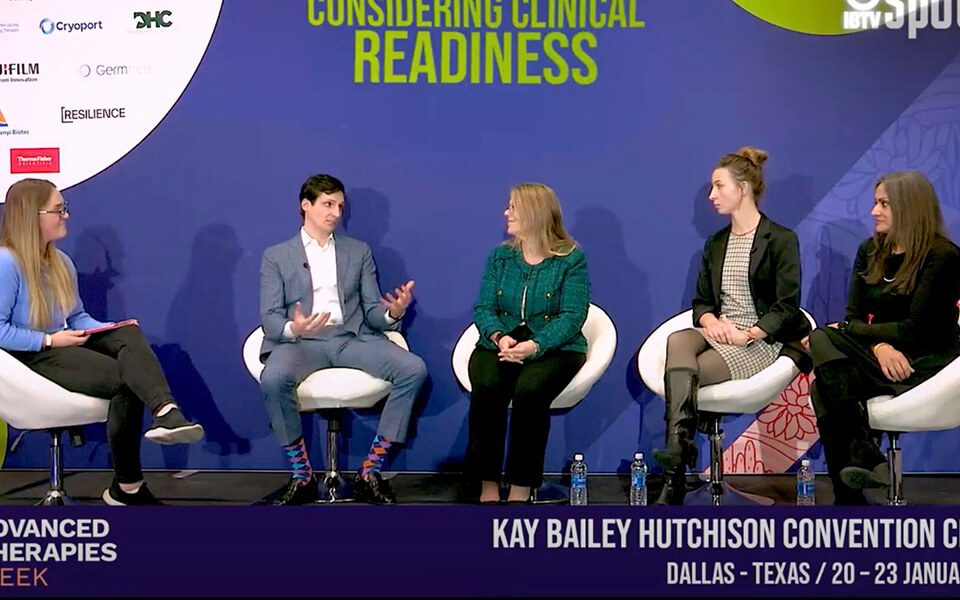If you’re working in the high-stakes world of Cell and Gene Therapy (CGT), you know the immense promise of these revolutionary treatments. You also understand the unique and complex challenges that come with bringing them to life. Among the most consistent, frustrating pain points voiced by CGT professionals? Equipment management.
Creating CGTs relies heavily on specialized equipment, including biosafety cabinets, incubators, centrifuges, and freezers. Each piece is crucial for maintaining the therapeutic product’s viability and purity from start to finish. Yet, managing all this specialized equipment is a massive headache for CGT professionals. It’s not just about logistics; it hits everything from efficiency and costs to product quality and patient safety.
Since CGTs are complex and expensive to manufacture and heavily reliant on this equipment, poor equipment management can disrupt production, compromise product quality, lead to delays, and increase costs. Ultimately, this means patients wait longer for life-saving treatments. It’s clear: better equipment management directly helps patients and helps the whole industry grow.
Unpacking CGT Equipment Management Challenges
CGT manufacturing is uniquely complex. We’re talking about living cells, often custom-made for each patient, which creates a “complex maze” of processes. This means meticulous tracking and special handling from start to finish. Every step, from cell isolation to cryopreservation, needs strict quality control. Additionally, maintaining optimal conditions, such as temperature and CO2 levels, in incubators and freezers is crucial for cell health, despite the equipment itself potentially generating heat in cleanrooms. But relying on manual processes in this intricate environment? That’s where big problems and risks creep in:
- Human Error & Contamination: Manual work is slow, costly, and prone to mistakes. One slip-up—like a mislabeled sample—can ruin an entire batch, delaying patient treatment and wasting precious resources. More handling means higher contamination risks, which can be detrimental to product quality and patient safety.
- Information Silos & Traceability Gaps: Paper records and disconnected systems often create ‘information silos,’ which block communication between teams. Critical data can get lost or miscommunicated, risking product quality and making it incredibly hard to track personalized therapies from start to finish—which is vital.
- Burdens of Regulatory Compliance: Every piece of CGT equipment must be thoroughly validated, calibrated, and maintained in accordance with strict GMP and other regulations. Compliance is challenging because rules are complex and constantly evolving, and manual errors in documentation or data integrity are prevalent. Paper-based systems make it harder to create audit-ready documents, thereby increasing the risk of penalties.
- Operational Bottlenecks & High Costs: Personalized CGTs mean bottlenecks and more work for lab staff. The entire manufacturing process is already challenging and expensive, and manual steps only exacerbate costs, making these life-saving treatments less affordable and accessible.
- Personnel Burnout: The constant need for precision, tight deadlines, and the massive responsibility for patient safety lead to mental fatigue, stress, and burnout for CGT lab teams. Manual processes often mean long hours and weekend work, making a healthy work-life balance nearly impossible.
Because CGTs are patient-specific therapies, any lapse in equipment management becomes a critical failure with immediate consequences. Losing a batch derived from a patient’s cells delays their time-sensitive treatment, jeopardizes their health, and wastes irreplaceable material—underscoring the need for precision at every step.
Furthermore, strict regulations such as GMP and the need for precise data and traceability conflict with manual equipment management, hindering the entire CGT industry from scaling up. Manual paper or Excel-based processes can’t deliver reliable data, audit trails, or full traceability. Non-compliance results in significant delays, failed trials, and life-saving therapies not reaching patients. To truly scale and meet demand, we must ditch manual systems that can’t keep up with these stringent regulatory demands.
The Digital Transformation: How Software Solutions Provide the Answer
Transitioning from traditional paper-based systems to electronic Quality Management Systems (eQMS), manufacturing execution systems (MES), and other advanced software is essential for modernizing CGT operations, ensuring compliance, and scaling up. These digital platforms consolidate all aspects of quality and equipment management into a single, easy-to-use system, addressing the significant challenges we just discussed. Think robust eQMS, specialized calibration software, and advanced MES designed explicitly for the unique requirements of biological materials.
Key Features Addressing Pain Points:
- Automated Workflows & Data Integration: Digital solutions streamline complex projects with workflows that handle everything from orders to reports. They connect directly with lab instruments, automatically capturing data and reducing errors. This automation reduces staff workload and eliminates manual data entry errors, making batch recording effortless.
- Comprehensive Inventory & Traceability: Smart software tracks biological materials—like donor samples and cell lines—through their entire journey, giving you complete chain-of-custody records. This end-to-end traceability is vital for personalized therapies, where every step must be documented. Additionally, it tracks equipment details, including purchases, warranties, and locations.
- Enhanced Quality Control & Regulatory Compliance: Top software includes built-in audit trails, secure data, and automated quality checks, which help to ensure compliance. They support standards like HIPAA and GxP, significantly reducing manual compliance work. An eQMS establishes a ‘closed-loop’ system for continuous improvement and rapid issue resolution, ensuring alignment with strict regulations.
- Real-time Monitoring & Predictive Insights: Digital platforms provide instant visibility into quality processes and the operational status of equipment. These platforms can actively monitor sample conditions, detect anomalies, and even help teams anticipate resource needs. This results in more accurate data, reduced sample risk, and smarter, proactive decisions.
- Scalability & Flexibility: Modern software scales easily from R&D to full production, keeping quality consistent and data flowing smoothly as you grow. Workflows can be customized for any CGT approach without needing custom coding, offering incredible adaptability.
Digital solutions are not merely digitizing existing processes; they are enabling a fundamental shift from reactive problem-solving to proactive, predictive quality and resource management in CGT. Manual systems only spot issues once they’ve occurred. Digital tools, however, offer real-time monitoring and integrated data. These platforms can detect anomalies and anticipate resource needs, allowing you to step in early and prevent problems before they impact product quality or cause expensive delays. This turns CGT manufacturing from a crisis-management game into a proactive, optimized process—essential given the high costs and personalized nature of these therapies.
What’s more, modern CGT software with advanced analytics capabilities connects instruments, workflows, and quality systems, eliminating information silos. This builds a unified, trustworthy data system essential for stringent regulatory checks and rapid innovation. Without such a digital solution, comparable, reliable, and accurate data is unavailable, meaning a lab can’t learn or demonstrate learning to auditors. This advanced analytics capability is paramount. Digital platforms integrate data across R&D, process development, and clinical trials by directly linking with laboratory instruments and automatically capturing data. This creates a single, clear view, ensuring data integrity and full traceability throughout the process. This isn’t just convenient; it’s fundamental for proving regulatory compliance and for the rapid improvements needed in a field where speed to market is everything.
The Future of CGT: Efficiency, Safety, and Accessibility
By embracing digital solutions, the CGT industry can significantly boost product quality and patient safety, thanks to fewer errors and consistent quality across every batch. More efficiency and fewer mistakes from automation directly result in lower manufacturing costs, making these life-saving therapies more accessible and affordable for a wider range of patients.
Automation and strong digital tools aren’t just nice-to-haves; they’re essential for scaling the industry to meet growing patient demand. They ensure that therapies can be produced at the correct scale and reduce treatment times. Adopting digital equipment management isn’t just an operational upgrade; it’s a strategic must-do that helps achieve the ethical goal of making CGT therapies more affordable and accessible. Currently, CGTs are extremely expensive, which limits patient access. Manual, inefficient processes are a significant contributor to that cost. By cutting errors, boosting efficiency, and enabling automation, manufacturers can directly lower their costs with digital solutions. By making manufacturing more efficient and cost-effective, the industry can lower CGT prices, thereby opening access to more patients and fulfilling the true promise of these medicines.
Additionally, transitioning to a digital solution fosters a culture of continuous improvement and proactive quality. This means that issues are identified and resolved quickly, minimizing risk and preparing organizations for future regulations and market shifts. Investing in this infrastructure isn’t just for regulatory success or efficiency; it’s essential for delivering these life-changing therapies to patients more quickly.
Take the Next Step with Title21
Ready to simplify your CGT equipment management and improve lab efficiency? Title21’s end-to-end digital platform is specifically designed to help you meet compliance and get life-saving therapies to patients faster. Contact us today to learn more or schedule a personalized demo.







